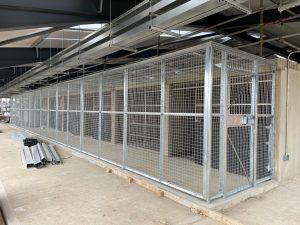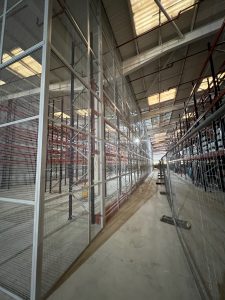Hygiene is a cornerstone of the food processing industry, where even minor lapses can lead to significant risks, such as contamination or the spread of harmful bacteria.
Food processing plants are held to some of the most stringent cleanliness standards, requiring every aspect of their operations and equipment to meet hygiene expectations.
Safety fencing is an often-overlooked component of this setup, yet its role in maintaining a clean and compliant environment is crucial.
Stainless steel safety fencing has emerged as a preferred choice for food processing facilities due to its unique properties.
From its resistance to corrosion to its easy-to-clean surfaces, stainless steel offers benefits that align perfectly with the hygiene demands of food production.
This blog explores how stainless steel safety fencing contributes to maintaining hygienic standards, offering insights into its advantages and why it stands out in the industry.
The Unique Hygiene Requirements of Food Processing Plants
Food processing plants operate in an environment where hygiene is non-negotiable. Every piece of equipment, from machinery to barriers, must be designed to minimise the risk of contamination.
Surfaces must be smooth and non-porous, ensuring that dirt, bacteria, and food residues cannot accumulate. Additionally, materials must withstand repeated exposure to cleaning agents and high-pressure washing systems to maintain sanitation.
Regulations governing food safety are equally demanding. In the UK and Europe, standards such as HACCP (Hazard Analysis and Critical Control Points) dictate stringent hygiene protocols to prevent contamination.
Compliance with these standards ensures food products are safe for consumption, making it imperative for facilities to invest in equipment, like safety fencing, that supports these goals.

Why Stainless Steel is Ideal for Food Processing Environments
Stainless steel is uniquely suited to the food processing industry due to its material properties. Its non-porous surface ensures that bacteria and other contaminants cannot penetrate, making it significantly easier to clean.
Furthermore, stainless steel is highly resistant to corrosion, even when exposed to harsh cleaning chemicals or acidic substances found in food production environments.
When compared to alternative materials like aluminium or plastic, stainless steel consistently outperforms. While other materials may degrade over time or retain residues that compromise hygiene, stainless steel remains durable and hygienic.
Its strength and longevity make it a practical choice for facilities looking to maintain high sanitation standards while ensuring long-term value.
How Stainless Steel Safety Fencing Supports Hygiene
One of the standout advantages of stainless steel safety fencing is its ease of cleaning. The smooth, non-porous surface can withstand high-pressure washing and chemical disinfectants, ensuring that any contaminants are removed efficiently.
This is particularly important in food processing plants, where thorough cleaning is conducted frequently to meet regulatory standards.
Stainless steel safety fencing also acts as an effective physical barrier, preventing cross-contamination between different areas of a facility. This is especially vital in environments where raw and processed foods are handled in proximity.
By compartmentalising workflows, stainless steel fencing enhances hygiene and operational safety, reducing the risk of contamination at every stage of production.

Additional Benefits of Stainless Steel Safety Fencing
Beyond its hygienic advantages, stainless steel safety fencing offers exceptional durability, making it a cost-effective investment. Its resistance to wear and tear ensures that it remains functional and visually appealing over many years, reducing the need for frequent replacements.
This longevity also makes it a more economical choice in the long run compared to other materials that may require constant maintenance or replacement.
Stainless steel also brings an aesthetic edge to food processing facilities. Its clean, polished finish aligns with the professional standards of modern production environments, projecting an image of quality and care.
Moreover, as a recyclable material, stainless steel contributes to sustainability efforts, aligning with the industry’s increasing focus on environmentally friendly practices.
Conclusion
Stainless steel safety fencing is pivotal in maintaining hygiene in food processing plants. Its non-porous, corrosion-resistant properties make it ideal for withstanding the rigorous cleaning processes required in such environments.
As a barrier against contamination and a material supporting easy sanitation, stainless steel fencing ensures facilities meet operational and regulatory hygiene standards.
By choosing stainless steel safety fencing, food processing facilities can achieve more than just compliance; they gain a durable, cost-effective, and sustainable solution that enhances their operations.
For those looking to elevate hygiene and safety standards, investing in stainless steel fencing is a decision that offers both immediate and long-term benefits.
Get in touch with us today for more information and a free quote.
